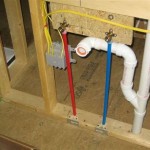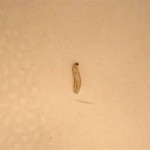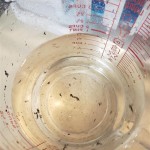How To Install a Vent in a Bathroom Sink
Proper ventilation is crucial for a functional and healthy bathroom. A correctly installed vent prevents slow drainage, foul odors, and the buildup of harmful sewer gases. This article provides a comprehensive guide to installing a vent in a bathroom sink drain, enabling proper airflow and optimal plumbing performance.
Understanding the Importance of Venting
Vents equalize air pressure within the drain system. Without proper venting, a vacuum can form, leading to slow draining or even the siphoning of water from P-traps. These traps hold water, creating a barrier against sewer gases entering the home. A correctly functioning vent system ensures efficient drainage and prevents the release of unpleasant and potentially hazardous gases.
Tools and Materials Needed
Gathering the necessary tools and materials beforehand streamlines the installation process. The required items include: * PVC or ABS pipes and fittings (size depends on existing plumbing) * Measuring tape * Hacksaw or PVC cutter * PVC cement and primer * Level * Drill with appropriate drill bits (for wall penetration if necessary) * Pipe hangers or straps * Safety glasses and gloves * Air admittance valve (optional, for difficult venting situations)
Locating the Existing Vent System
Before starting the installation, locate the closest vent stack. This vertical pipe extends through the roof and serves as the primary vent for the plumbing system. Ideally, the new vent should connect to this main stack. If connecting to the main stack isn't feasible, consider alternative solutions, such as an air admittance valve (AAV), though local plumbing codes may restrict or prohibit their use.
Planning the Vent Route
The vent pipe should follow the most direct route possible to the main vent stack, minimizing bends and turns. Ensure the chosen path avoids obstructions like electrical wiring, ductwork, and structural elements. Plan the route carefully to avoid unnecessary complexities and ensure a smooth and efficient installation. Mark the path clearly on the wall or ceiling joists.
Cutting and Connecting the Pipes
Measure and cut the necessary lengths of PVC or ABS pipe using a hacksaw or PVC cutter. Ensure clean, straight cuts for secure connections. Dry-fit the pipes and fittings before applying any cement. This crucial step confirms proper alignment and fit, preventing costly mistakes. Once satisfied with the dry fit, apply PVC primer to the inside of the fittings and the outside of the pipes. Then, apply PVC cement and quickly connect the pieces, twisting slightly to ensure a good seal.
Connecting to the Main Vent Stack
If connecting directly to the main vent stack, use a sanitary tee fitting. Cut into the existing stack and install the tee, ensuring a watertight connection. Connect the new vent pipe to the branch of the tee. Support all pipes with appropriate hangers or straps, securing them to the framing members every 4-6 feet. This prevents sagging and ensures long-term stability.
Installing an Air Admittance Valve (AAV)
If connecting to the main stack is impossible due to structural obstacles or distance, an AAV may be a viable option. Consult local plumbing codes to ensure compliance before installing an AAV. These valves allow air into the drain system while preventing sewer gases from escaping. Install the AAV on the vent line as close to the fixture as possible, maintaining a minimum vertical distance as specified by the manufacturer's instructions and local plumbing codes. Typically, the AAV should be located above the flood rim level of the fixture it serves.
Testing the Vent System
After the cement has cured completely (refer to manufacturer's instructions), test the system by running water in the sink. Observe the drainage rate and check for any leaks around the connections. If the water drains quickly and no leaks are detected, the vent installation is successful. If slow drainage persists, double-check all connections and ensure the vent pipe has no obstructions. If leaks are found, address them promptly by disassembling the affected section and re-cementing.
Inspecting and Maintaining the Vent System
Regular inspection and maintenance are essential for the long-term effectiveness of the vent system. Periodically check the vent stack for obstructions such as leaves or debris. Ensure the AAV, if installed, is functioning correctly. Address any issues promptly to prevent future problems. A properly maintained vent system ensures efficient drainage and prevents sewer gas buildup, keeping your bathroom functional and safe.
:strip_icc()/SCP_180_15-56fe1fcc2d55401bbdf8c75b46a028c5.jpg?strip=all)
How To Install Plumbing Vent Lines In Your Bathroom

How To Vent A Toilet Sink And Shower Drain

How To Install Vent Under Sink

How To Install Vent Under Sink

How To Install Vent Under Sink

Magic Vent

Vent Options For Plumbing Drains Fine Homebuilding

How Does Your Bathroom Sink Drain And Vent Pipes Work

Plumbing Vents The Ultimate Guide Hammerpedia

How To Install Vent Under Sink







